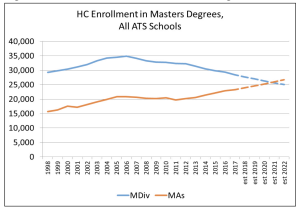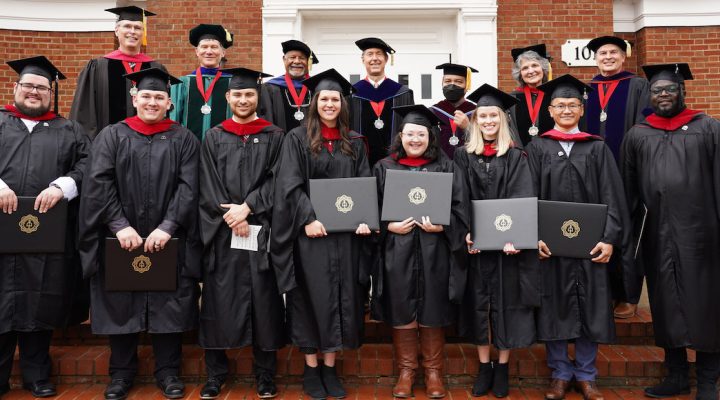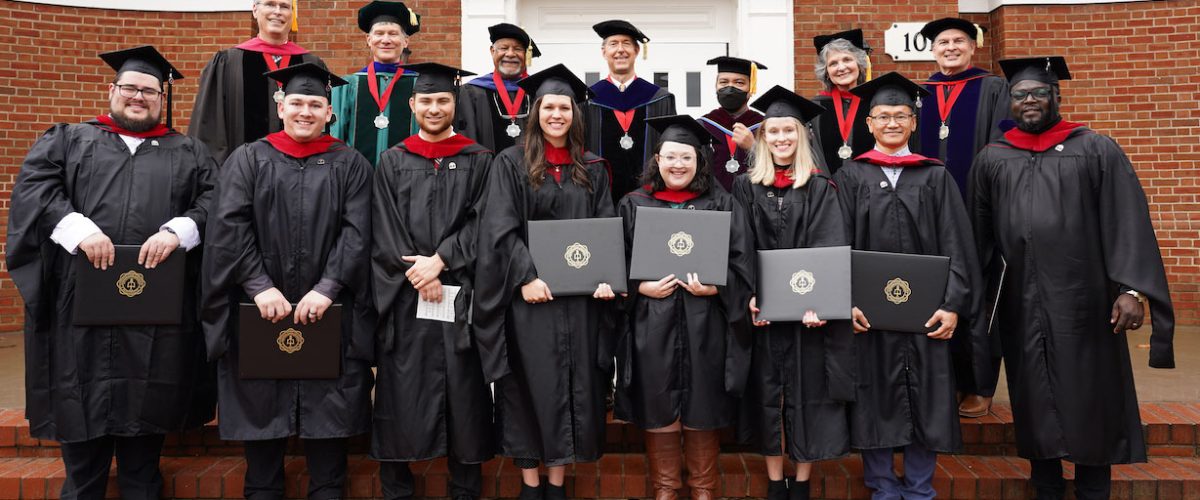After more than a decade of significant instability, enrollment in America’s accredited theological schools has found some stability, although the degree programs being pursued continue to shift and more schools are shrinking than growing.
These are the findings of a fall 2022 report from the Association of Theological Schools, the primary accrediting body for seminaries and divinity schools.
Fall enrollments — which have been reported to ATS by 90% of its member schools but not made public — show a combined stability yet indicate only 43% of schools are growing and 57% are declining in enrollment. This follows a trend ATS has tracked since 2006.

Nationwide, enrollment losses at some schools are being made up by corresponding enrollment gains at other schools.
This is good news for theological education, after roughly a decade (2011 to 2019) in which far more schools were in decline.
The bigger story, however, is the continuing shift in degree programs students chose at ATS-affiliated schools.
The master of divinity degree long has been the gold standard for theological education for pastors. However, it is an arduous three-year (at best) program to earn a master’s degree. Most Protestant seminaries offer M.Div. programs that require about 90 hours of academic credit.
Take Truett Seminary at Baylor University as an example of a typical Baptist school. The basic M.Div. currently requires 87 credit hours. By comparison, a student in Baylor’s history department may earn a master of arts degree with 30 hours of course credit and a Ph.D. with another 45 credit hours, plus a dissertation. Thus, a history student may earn a doctorate with fewer credits than a seminarian invests in only a master’s degree.
The American Bar Association requires a minimum of 83 credit hours for a law degree, which is comparable in scope to an M.Div., but has one big difference: A law degree is considered a terminal degree, while an M.Div. is not.
Given the rising cost of education and the student loan debt crisis, students preparing for ministry often look for shorter, less-expensive paths to preparation. Thus, the growth in the master of arts degrees offered by seminaries and divinity schools.
ATS reports this fall that nationwide, M.Div. enrollment has dropped to about 28,000 students, which is a decline of 4% from fall 2021 and a decline of 9% since fall 2018. Even more telling, M.Div. enrollment today accounts for about 35% of all students at ATS-accredited schools, down from 43% a decade ago.
An earlier report from ATS noted in 1998 there were about 29,300 M.Div. students enrolled in ATS schools, and the peak enrollment for the M.Div. was just under 35,000 in 2006. That’s means the venerable M.Div. has experienced a 20% drop from 2006 to 2022.

This ATS chart shows projections for recent years that are close to what actually was reported.
At the same time, enrollment in master of arts degree programs has grown from 15,700 in 1998 to 27,900 this fall — a 78% increase.
If this fall’s provisional enrollment figures hold up, this academic year will mark the first time in the history of ATS schools that master of arts degree enrollment equals master of divinity degree enrollment.
This academic year will mark the first time in the history of ATS schools that master of arts degree enrollment equals master of divinity degree enrollment.
Master of arts degrees come with various emphases — Truett Seminary offers five options, for example — and require anywhere from 38 to 60 credit hours.
Meanwhile, another growth area for ATS schools is the doctor of ministry degree, with projected nationwide enrollment of 12,300 this fall. ATS says that’s a 24% increase from fall 2018.
The D.Min. degree first was authorized by ATS in 1970 and has grown immensely in popularity ever since. It combines practical field experience with academic coursework and seminars, usually culminating in a project rather than a dissertation. While typically spanning three years, this degree may be accomplished while holding a full-time job such as a pastorate and attending classes only a few times a year.
At first derided as something unworthy of bestowing the title “doctor” on its graduates, the degree increasingly has gained acceptance. As a result, many seminaries and divinity schools have focused their Ph.D. programs on individuals who desire to teach, while promoting the D.Min. as a more practical degree for those who serve local congregations.
Nationwide, four times as many people are enrolled in doctor of ministry degree programs as doctor of philosophy and doctor of theology programs. ATS reports that this year 4,250 students are enrolled in Ph.D. and Th.D. programs.
Related articles:
Kentucky seminary receives nearly $1 million grant from Lilly for education innovation
With declining international student populations, what makes for a sustainable seminary? | Analysis by Andrew Gardner
Why there’s a challenging future ahead for Baptist seminaries and future faculty | Analysis by Andrew Gardner
Behind the numbers: How Southwestern Seminary’s enrollment came to be the lowest it has been since World War II | Analysis by Mark Wingfield


